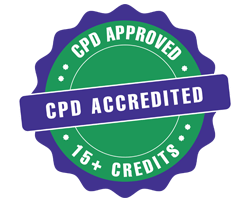Title : Bridging the gap: Integrating harm reduction into addiction recovery practices
Abstract:
Harm reduction has long been recognized as a practical, compassionate approach to addressing substance use, yet it is often misunderstood or perceived as incompatible with traditional recovery models. This presentation aims to dispel these misconceptions by showcasing the profound potential of harm reduction when integrated into addiction recovery practices.
Harm reduction focuses on meeting individuals where they are, emphasizing safety, dignity, and autonomy while minimizing the risks associated with substance use. Far from being a standalone approach, harm reduction can serve as a bridge which connects individuals to recovery, providing an entry point for those who might otherwise face barriers to care.
During this session, we will delve into the foundational principles of harm reduction, illustrating its value not only as a life-saving intervention but also as a means to empower individuals on their journey toward wellness. As a therapist specializing in addiction and recovery, with over nine years of experience supporting individuals navigating substance use disorders, I bring both professional expertise and personal insight as someone in long-term recovery. My lived experience informs my work and fosters a deep understanding of the challenges and triumphs faced by those on the recovery journey.
In addition to my therapeutic practice, I serve as the Executive Director of the Missouri Network for Opiate Reform and Recovery (MoNetwork), a grassroots harm reduction organization offering recovery support. MoNetwork provides vital services such as naloxone distribution,syringe service program, peer support, overdose prevention education, and advocacy for policy reform to ensure equitable access to care. We meet individuals where they are—without judgment or preconditions for abstinence—offering resources and support to improve their safety, health, and quality of life.
Through my work at MoNetwork, I have witnessed firsthand the transformative power of harm reduction, not only in saving lives but also in creating pathways to recovery and personal empowerment. By combining professional therapeutic approaches with community-driven harm reduction strategies, we can build bridges that connect individuals to the care and resources they need, fostering hope and resilience in the face of adversity.
Key topics of discussion will include:
- Understanding Harm Reduction: Exploring its principles, goals, and the critical distinction between enabling behavior and empowering individuals.
- Breaking Down Barriers: Examining how harm reduction reduces stigma, fosters trust, and makes care accessible to individuals who use substances.
- Practical Strategies for Integration: Tools and techniques for incorporating harm reduction into clinical, community, and peer-support settings.
- Success Stories and Case Studies: Highlighting tangible outcomes from harm reduction initiatives, such as improved health metrics, increased engagement with recovery resources, and stronger community ties.
This presentation is designed to equip addiction professionals, clinicians, peer recovery specialists, and community advocates with actionable knowledge to create a more inclusive, effective continuum of care. Participants will leave with a deeper understanding of how harm reduction can complement recovery efforts, enhancing both individual and community outcomes.
By integrating harm reduction into addiction recovery practices, we not only save lives but also cultivate a culture of compassion and inclusion, where every individual has the opportunity to thrive. This session will inspire attendees to reimagine addiction care as a spectrum that bridges active substance use with sustained wellness, paving the way for a healthier, more equitable future.



